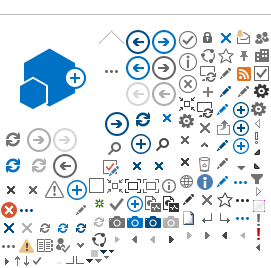You can create rules at the solution level and at the process level.
Solution Rule
A rule created in your solution’s Rules folder is a solution rule. A solution rule can access solution data items but not process data items. A solution rule can be used by any process in your solution.
Process Rule
A rule created in a process’ Rules folder is a process rule. A process rule can access both solution data items and process data items, but it can only be used with the process in which you created the rule.
Example Scenario
Consider a solution named Resources. The Resources solution has solution data items, Manager and Employee. Resources also has a process, Process A.
Process A has a process data item, Employees. The Resources solution includes a data model, Person, with attributes, First Name, Last Name, Email, Employee ID, and Role. You created a rule, Is Manager, at the solution level and another rule, Is Developer, at the process level.
Use these rules keeping the following in mind:
• Is Developer can access the solution data items and the process data items, because it was created within the context of a process.
• Is Manager can access the solution items but not the process data items (in this case, Employees).
To check whether an employee is a Developer, you can type the rule as follows:
DataItems.Employee.Role = "Developer".

